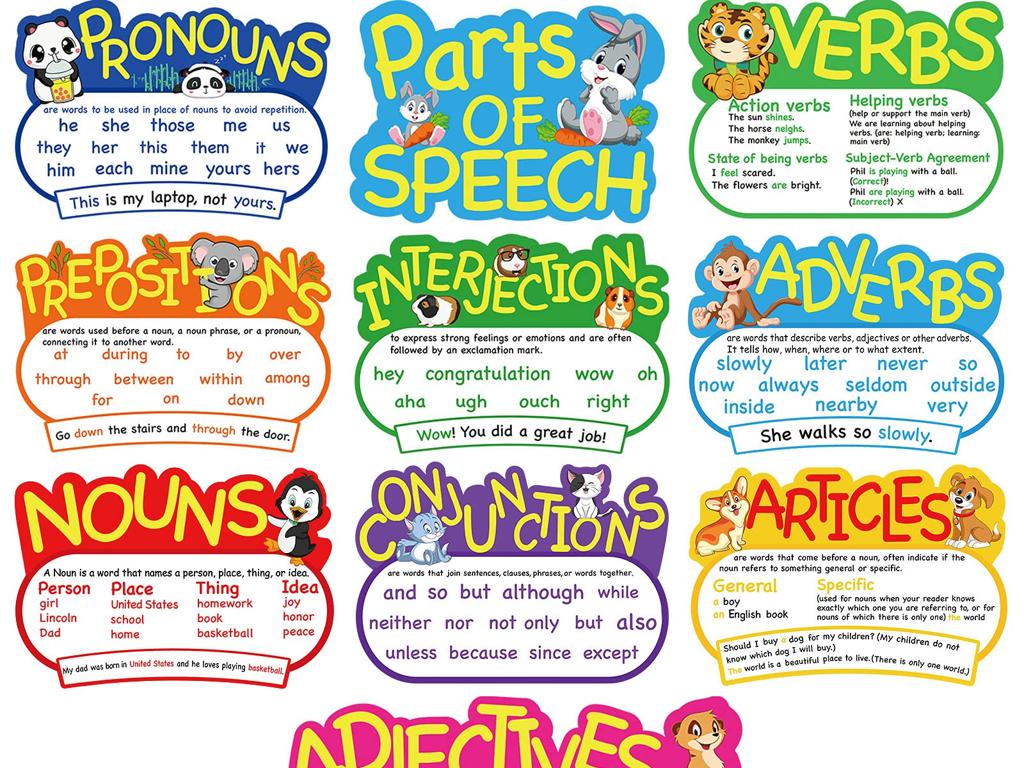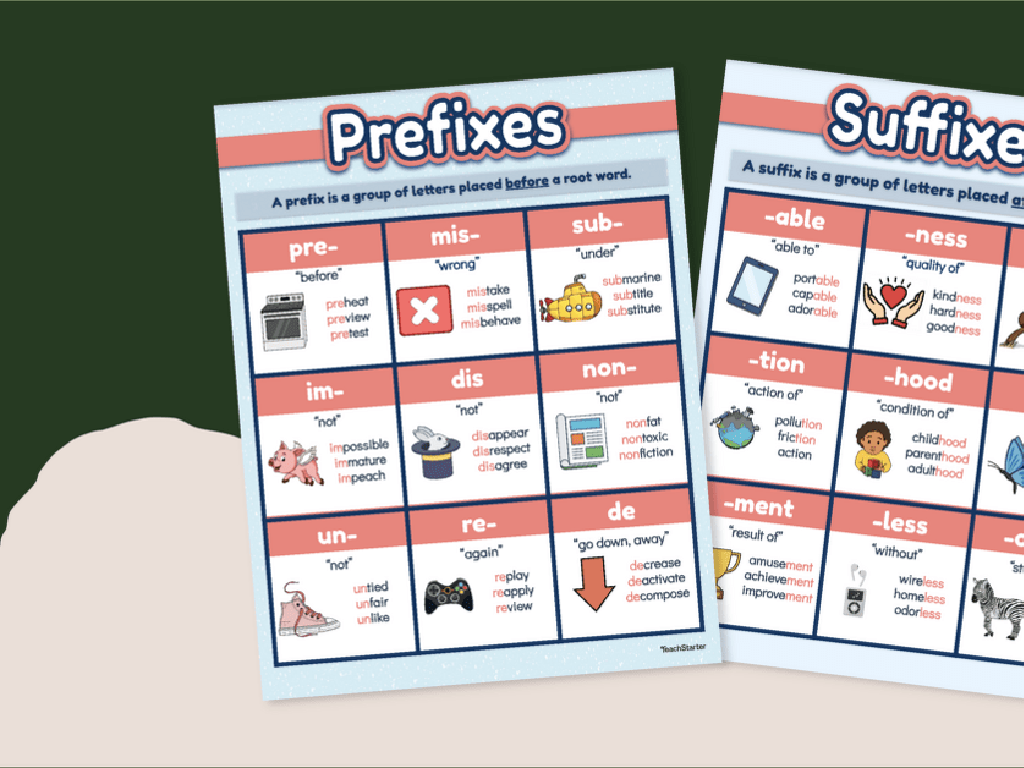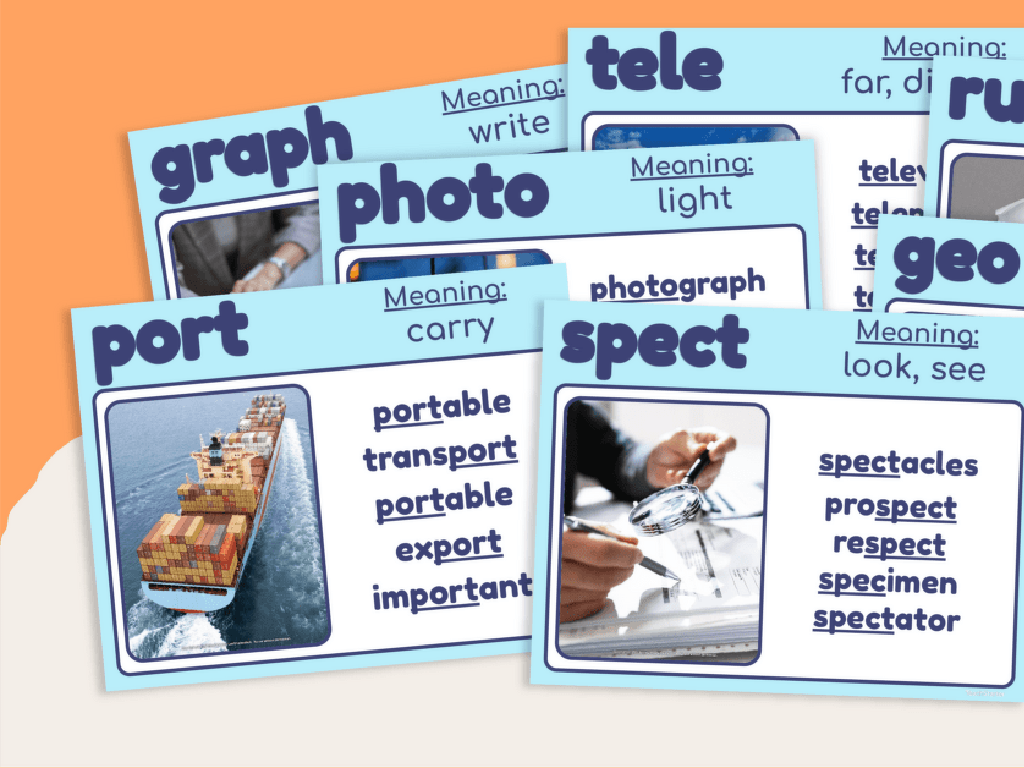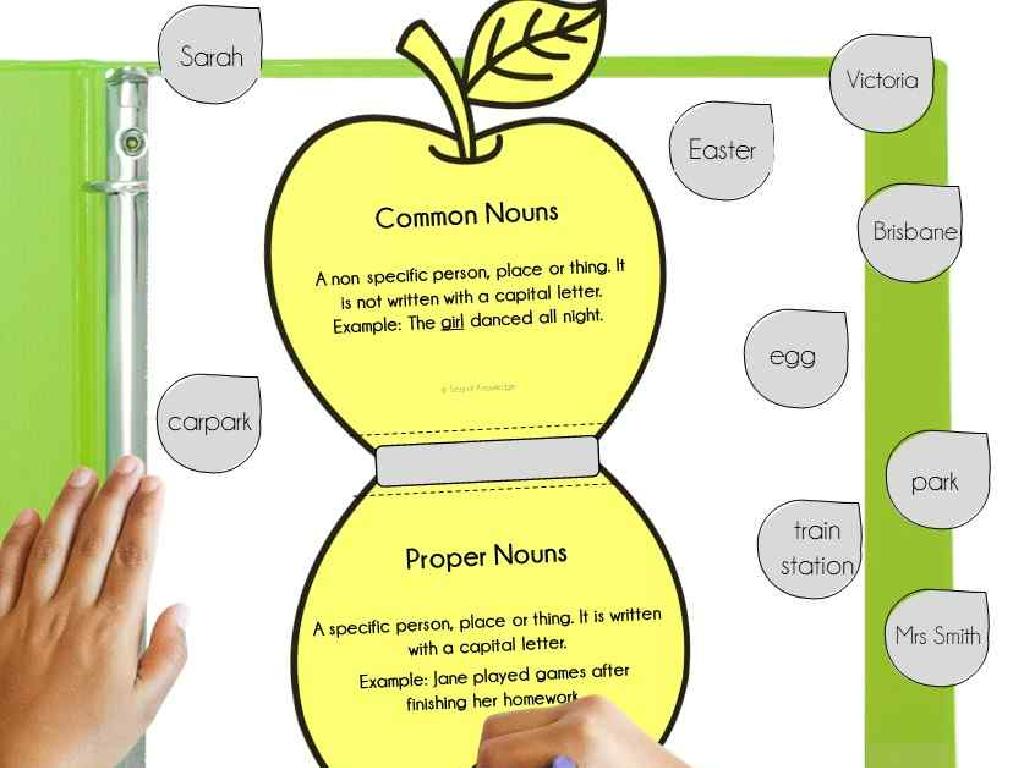Greater And Less - Compare Two Numbers Up To 10
Subject: Math
Grade: Kindergarten
Topic: Comparing Up To 10
Summary: This engaging Kindergarten math lesson helps students compare numbers up to 10 using the concepts of "greater" and "less." Through hands-on activities, number lines, symbols like > and <, and visual comparisons with everyday objects, children learn how to identify larger and smaller values. Fun analogies, such as the hungry alligator, make symbol usage easy to remember. Interactive games, group counting, and a number hunt reinforce early math understanding through play.
Please LOG IN to download the presentation. Access is available to registered users only.
View More Content
Exploring Numbers: Greater and Less
– Numbers are like sizes
– ‘Greater’ means a bigger number
– If we have 7 apples and 5 oranges, 7 is greater because it’s more.
– ‘Less’ means a smaller number
– If we have 3 cookies and 6 candies, 3 is less because it’s fewer.
– Comparing numbers up to 10
– Using our fingers, we can see which number is more or less!
|
This slide introduces the concept of comparing numbers to Kindergarten students by relating it to the idea of size, which they can easily understand. Start by explaining that numbers can be big or small, just like objects. Use tangible examples like fruits or sweets to illustrate ‘greater’ and ‘less’. Encourage the children to use their fingers to count and compare numbers, making it interactive and fun. The goal is to help them visualize the concept of comparison and understand that numbers represent quantities that can be directly compared. During the class, engage the students with hands-on activities where they can practice comparing different sets of items or numbers.
Understanding ‘Greater’ in Numbers
– ‘Greater’ means more than another
– Right side on number line is greater
– Numbers increase as we move right
– Which number is greater than 5?
– Is 6 or 8 greater than 5? How about 7?
– Practice with different numbers
– Try comparing 2 and 9, or 3 and 5!
|
This slide introduces the concept of ‘greater’ to Kindergarten students. Begin by explaining that ‘greater’ means a number is bigger or more than another number. Use a number line visual to show that as you move to the right, the numbers get greater. Ask the students to find a number greater than 5 to engage them. Encourage them to practice with different numbers, using the number line as a guide. This will help them visualize and understand the concept of comparing numbers. Make sure to provide examples and allow the students to come up to the board and point to numbers that are greater than the ones you mention.
Understanding ‘Less’ in Numbers
– ‘Less’ means smaller number
– Numbers left on a line are less
– Like on a ruler, smaller numbers are to the left!
– Comparing numbers to 8
– Is 5 less than 8? Yes, because it’s before 8 on the number line.
– Finding which is less
– Let’s practice with different numbers to see which ones are less than 8.
|
This slide introduces the concept of ‘less’ to Kindergarten students by comparing numbers up to 10. Start by explaining that ‘less’ means a smaller amount or number. Use a number line as a visual aid to show that numbers decrease in value as you move left. Ask the students to identify numbers that are less than 8, reinforcing the concept by using real-life examples such as lining up toys by size or counting out loud. Encourage participation by asking them to find numbers less than 8 in the classroom, on their fingers, or in a book. This interactive approach helps solidify their understanding of the concept of ‘less’.
Comparing Numbers: Greater or Less
– Comparing by counting objects
– Counting together in groups
– Let’s count objects in two groups together
– Identifying the group with more
– Which group has more objects? Let’s find out
– Understanding ‘greater’ and ‘less’
– ‘Greater’ means more, ‘less’ means fewer
|
This slide introduces the concept of comparing numbers to Kindergarten students by using tangible objects like toys. Start by explaining that we can find out which number is greater or less by counting items. Engage the students in a group activity where they count objects in two separate groups. Ask them to identify which group has more items and discuss the terms ‘greater’ and ‘less’. Use visual aids like toy groups or pictures to help them understand. Reinforce the concept that the group with the higher count is ‘greater’ and the other is ‘less’. Encourage participation and make sure to praise their efforts to build confidence.
Using Symbols to Compare Numbers
– Symbols show greater and less
– Greater than symbol: >
– The ‘arrow’ points to the smaller number
– Less than symbol: <
– The 'arrow' points to the larger number
– Practice comparing numbers!
– Let's find which number is bigger or smaller
|
This slide introduces the concept of comparison using symbols to Kindergarten students. Begin by explaining that just like we use words to tell which number is bigger or smaller, we can also use special math symbols. Show them the greater than (>) and less than (<) symbols, and explain that the symbol looks like a little arrow that points to the smaller number. For example, 2 1 because 4 is greater than 1. Encourage the students to think of the symbols as an alligator’s mouth that always wants to eat the bigger number. During the practice, use visual aids and physical objects to help them understand the concept. Prepare several examples and let the students come to the board to try comparing numbers themselves.
Let’s Practice Comparing Numbers!
– It’s your turn to compare
– Choose the right symbol
– Is it , or = ?
– Open side faces the bigger number
– Like a hungry alligator, the open mouth faces the larger number!
– Let’s see who can do it!
|
This slide is designed for an interactive class activity where students practice comparing numbers up to 10. Display two numbers on the board and ask the students to choose the correct symbol (, or =) to compare them. Remind them of the ‘hungry alligator’ concept where the open side of the symbol, like an alligator’s open mouth, always faces the greater number. This visual can help them remember the concept. Prepare several pairs of numbers for the activity, ensuring a mix of greater than, less than, and equal to scenarios. Encourage participation and praise correct answers to build confidence. For students who struggle, provide additional guidance and practice opportunities.
Class Activity: Number Hunt
– Let’s go on a number hunt
– Find objects in our classroom
– Is their number greater or less?
– Compare the amounts of two groups of items
– Use symbols to show findings
– Use ‘>’ for greater, ‘<' for less
|
This interactive activity is designed to help Kindergarten students understand the concept of comparing quantities. Students will search the classroom for objects and group them to compare their numbers. They will then use the greater than (>) and less than (<) symbols to represent their findings. For example, if they find 3 pencils and 5 erasers, they would write '3 < 5'. Prepare a variety of objects in the classroom for students to count and compare. Encourage them to explain their thought process as they determine which symbol to use. This hands-on experience reinforces the concept of comparison and the use of mathematical symbols in a fun and engaging way.





